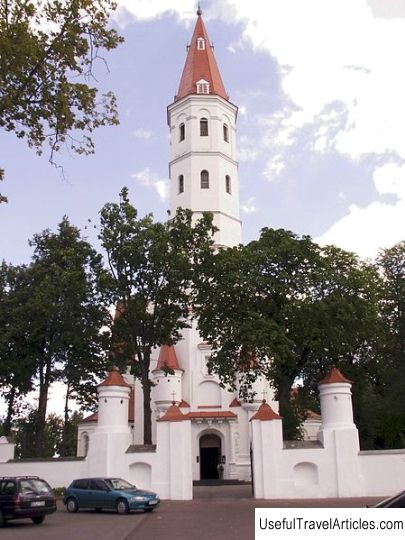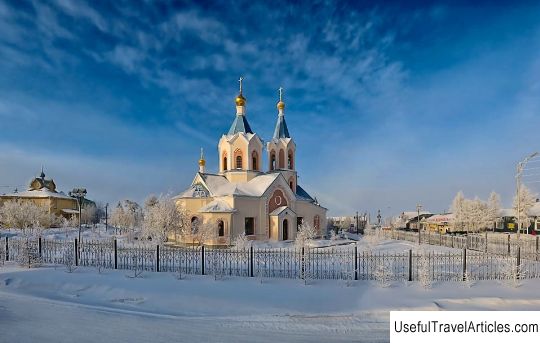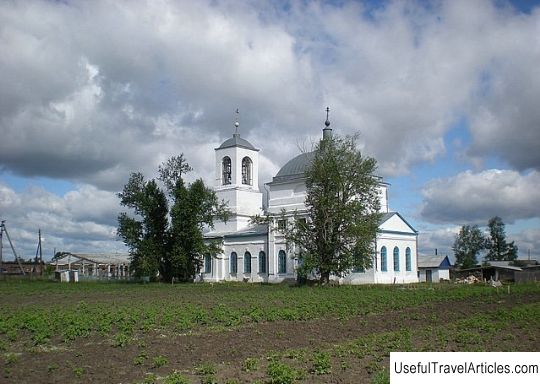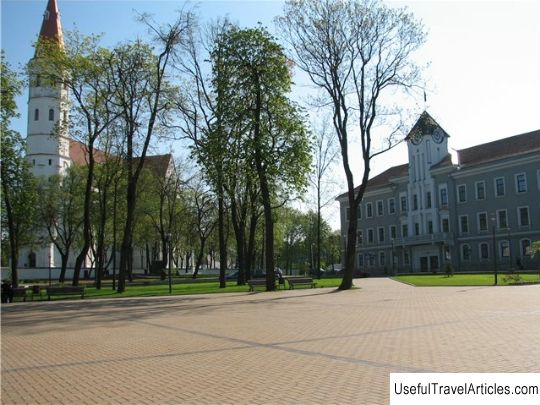St. Peter and Paul Orthodox church description and photos - Lithuania: Siauliai
Rating: 8,7/10 (7655 votes) 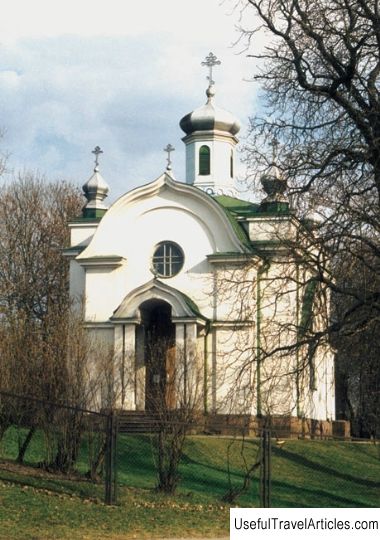
St. Peter and Paul Orthodox church description and photos - Lithuania: Siauliai. Detailed information about the attraction. Description, photographs and a map showing the nearest significant objects. The title in English is St. Peter and Paul Orthodox church. Photo and descriptionThe Orthodox church, consecrated in honor of the apostles Peter and Paul in the Lithuanian city of Siauliai, has experienced two births. It was founded and built in the central part of the city in 1867 at the place where the trading square adjoined the main city boulevard. The construction was funded by funds collected from taxes on estates and donations from residents of the city. The initiator was the Governor-General of Vilno, Muravyov NM. The building was designed by the famous architect Chagin N.M., the author of many churches of the diocese. The church looked like a cross and was decorated with five domes and a bell tower. The roof was covered with white iron from Siberia. Outside, the walls were decorated with stucco, the front side was covered with a hewn granite plinth. The church porch was also lined with granite. In the church there was a two-tiered wooden iconostasis with icons of Byzantine writing in gilded frames. At the beginning of the 20th century, the Peter and Paul Church could no longer accommodate parishioners. And they decided to expand it, even made an estimate. But the events of 1905 followed, which caused unrest throughout Russia. After the decree on religious tolerance, persecutions began openly against everything that concerned the Russian-speaking population, and this also affected the Orthodox faith. But despite this, the number of Orthodox Christians did not decrease, and in 1914 there were more than a thousand people in the community. During the First World War, the city was occupied by the Germans, who used the temple as a military hospital. After the war, the temple was returned, and Orthodox life was resumed in it. The turning point in the fate of the temple was the 30s of the XX century. A place, on which the temple was located, attracted the city authorities for the construction of a magistrate. A trial was held, which lasted from 1929 to 1933, during which a decision was made in favor of the city authorities. Not a single request for a privilege on the lease of land that no longer belonged to the temple was heard by the city authorities, the minister of education, or the president. A decision was made obliging the diocese to vacate the site in no more than a month without any material compensation. Data on the valuation of only the sidewalk and trees have survived, for which the Diocesan Council could receive about 3663 litas, but they were not paid either. Metropolitan Eleutherius (Epiphany) submitted petitions to the President and his prime ministers with appeals from believers to build a new church. The petitions were considered and in 1936, in the area of the city cemetery, a temple was built, which retained its former name. The authorities have allocated funds in the amount of LTL 30,000. The church was a smaller copy of the previous one; bricks from the old dismantled temple were used in its construction. On the west side, on the granite stone of the foundation, there are marks about the consecration of the temple -1864 and 1938. The revived church was consecrated in 1938 on September 17 by Metropolitan Eleutherius. The temple has become an integral part of the Orthodox cemetery. During the occupation, during the Great Patriotic War, the Germans set up a warehouse in the Peter and Paul Church, and a pit was dug at the cemetery, where the shot and those who died from epidemics were dumped. According to archival data, about 22 thousand prisoners of war are buried here. In 1947, when Archpriest Nikolai Savitsky was the rector, the community was registered by the Soviet authorities. Preserved data on the number of parishioners of the Peter and Paul Church in different years: in 1914 - 1284 people were in the community, in 1937 - 1832 people, in 1942-1943. there were 630 people, in 1957 - about 600 parishioners. Archpriest Michael Jacques, who is the rector of the parish, has served in the church from 1966 to the present day.     We also recommend reading Dormition Abbey description and photos - Israel: Jerusalem Topic: St. Peter and Paul Orthodox church description and photos - Lithuania: Siauliai. |
